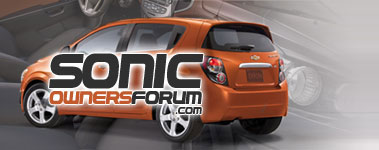sx sonic
New member
It is unlikely the car will benefit from both rear braces/bars. The opposite could occur and you have a car with a very lively rear end that wants to oversteer around every corner.
The reason being is that sway bars have an enormous impact on a vehicles balance. They're not only responsible for vehicle roll, but also if the car oversteers or understeers thru a turn.
The stiffness of the front and rear sway bar or torsion beam determines if the car oversteers or understeers thru a turn. Stiffening the front promotes understeer, stiffening the rear increases oversteer, stiffening both equally keeps the same balance while reducing vehicle roll although it can sacrifice ride compliance while driving straight.
Since almost all FWD cars tend to understeer from the factory and also have alot of body roll around turns stiffening up the rear roll resistance is desirable to most enthusiasts. It cuts down on vehicle roll and also helps the car rotate around a turn, definite plus. BUT if you go to stiff in the rear the car can be a chore to drive as the rear is trying to step out around every turn and the car is twitchy.
Since each bar/brace was designed and tested to work on its own I highly doubt they'd compliment each other. Only testing would tell for certain and it'll only be noticeable around more aggressive turning, lane changes, or accident avoidance.
I can say that it is not too hard to get lift throttle oversteer around high speed turns with just the DDM brace and personallu i think anymore would be sketchy.
If you want to try it then go for it, just be aware of the potential side effects.
And here's a few relevant links I found, they're ok.
Vehicle dynamics/sway bars/suspension explained - FordFusionClub.com : The #1 Ford Fusion Forum
anti-roll bar (sway bar) - iRacing.com Wiki
The reason being is that sway bars have an enormous impact on a vehicles balance. They're not only responsible for vehicle roll, but also if the car oversteers or understeers thru a turn.
The stiffness of the front and rear sway bar or torsion beam determines if the car oversteers or understeers thru a turn. Stiffening the front promotes understeer, stiffening the rear increases oversteer, stiffening both equally keeps the same balance while reducing vehicle roll although it can sacrifice ride compliance while driving straight.
Since almost all FWD cars tend to understeer from the factory and also have alot of body roll around turns stiffening up the rear roll resistance is desirable to most enthusiasts. It cuts down on vehicle roll and also helps the car rotate around a turn, definite plus. BUT if you go to stiff in the rear the car can be a chore to drive as the rear is trying to step out around every turn and the car is twitchy.
Since each bar/brace was designed and tested to work on its own I highly doubt they'd compliment each other. Only testing would tell for certain and it'll only be noticeable around more aggressive turning, lane changes, or accident avoidance.
I can say that it is not too hard to get lift throttle oversteer around high speed turns with just the DDM brace and personallu i think anymore would be sketchy.
If you want to try it then go for it, just be aware of the potential side effects.
And here's a few relevant links I found, they're ok.
Vehicle dynamics/sway bars/suspension explained - FordFusionClub.com : The #1 Ford Fusion Forum
anti-roll bar (sway bar) - iRacing.com Wiki
